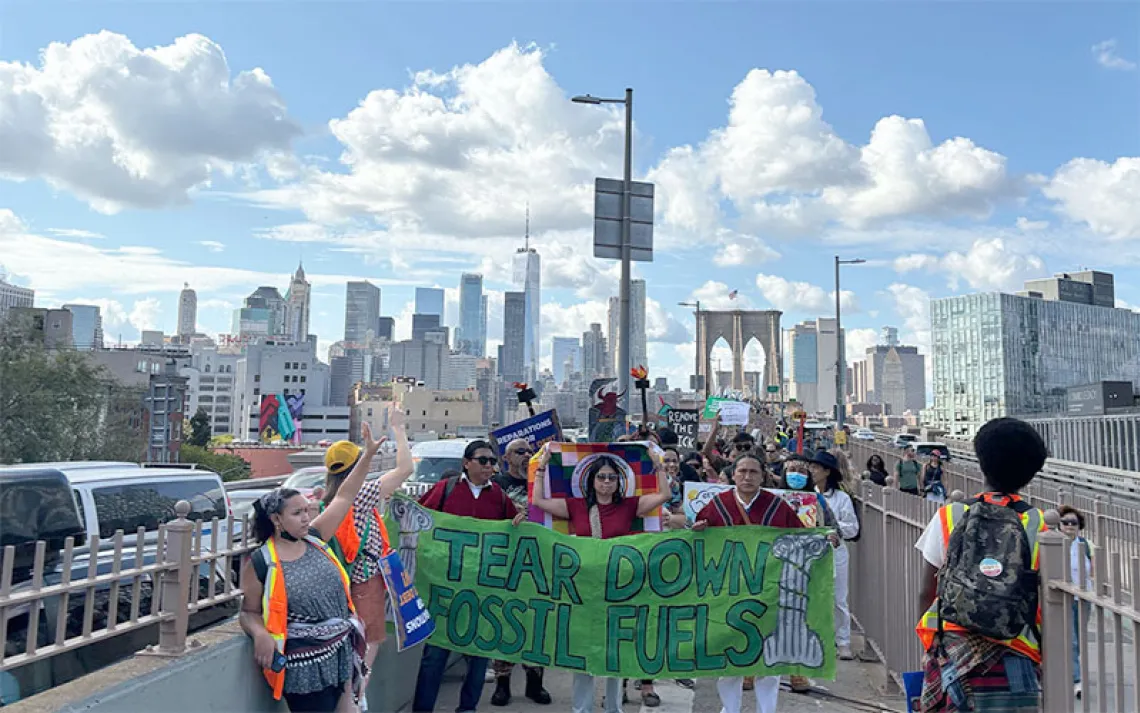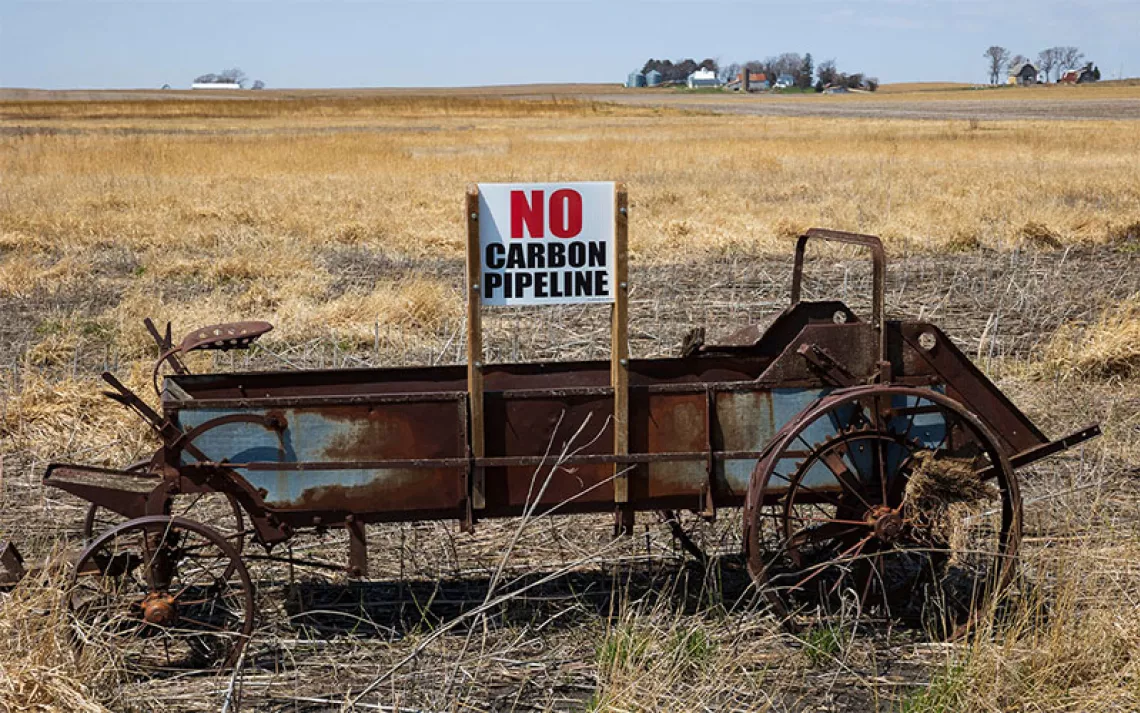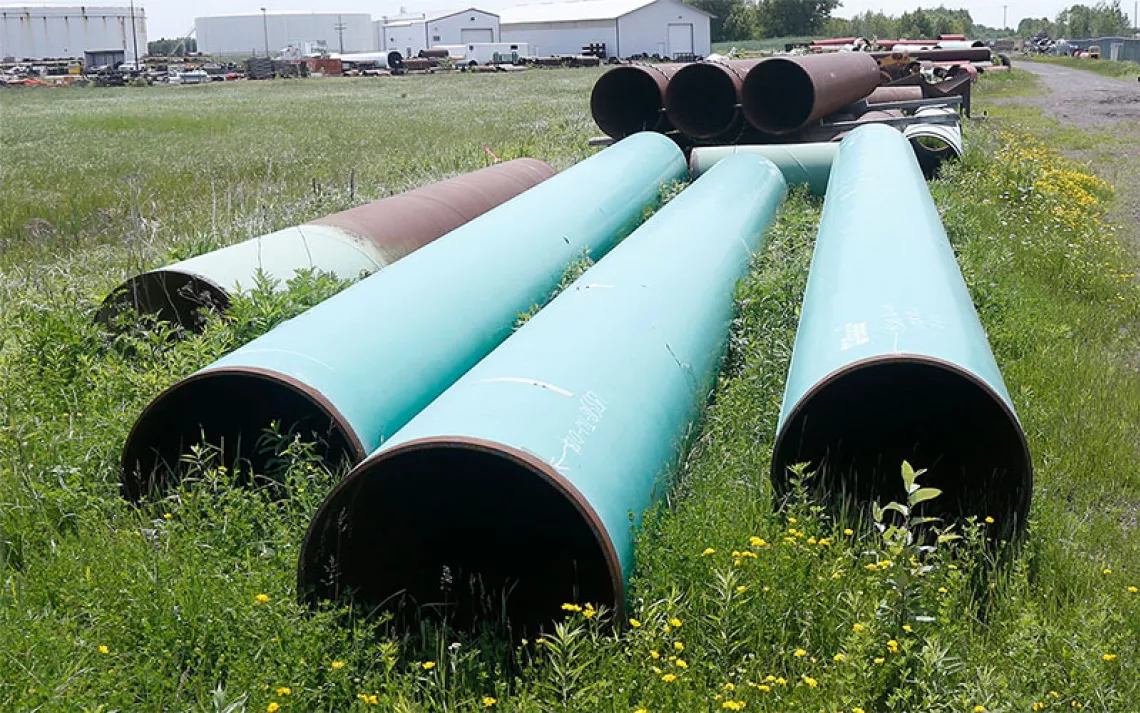A Battle for the Future of the Great Lakes
A pipeline carrying Canadian tar sands crude has already leaked a million gallons. These are the resisters dedicated to shutting down Enbridge Line 5.

Make every day an Earth Day
Get articles like this one sent directly to your inbox.
With this action you affirm you want to receive Sierra Club communications and may vote on policy designated by the Sierra Club Board.
A Battle for the Future of the Great Lakes
A pipeline carrying Canadian tar sands crude has already leaked a million gallons. These are the resisters dedicated to shutting down Enbridge Line 5.
The Straits of Mackinac and the city of St. Ignace, with Mackinac, Round, and Bois Blanc Islands in the distance. Over 700 miles of shoreline could be vulnerable in the event of an oil spill.
Early one December morning, from the pilot’s seat of her single-engine Piper Warrior, Kathie Brosemer told her passengers to look down. “The sediments near the shore, they swirl,” said Brosemer, an environmental scientist as well as an amateur pilot. “You get turquoise; you get yellow. Sometimes, when the tannins are high in the streams, you get purple—my favorite thing.” Below us, Lake Huron was all azure and hammered foil, but along its edges, at the mouths of rivers and creeks, sure enough, colorful plumes spiraled out into the currents.
At the Straits of Mackinac, the four-mile-wide channel between Lake Huron and Lake Michigan, there appeared the Mackinac Bridge—the longest suspension bridge in the Western Hemisphere. From this vantage, 1,000 feet high, its illuminated cables looked like garlands of Christmas lights. To the east, against the rising sun, the forested hump of Mackinac Island seemed to float in midair.
The island’s name is an abbreviation of Michilimackinac, Anishinaabe for “place of the great turtle.” Anishinaabe is the common language spoken by the Ojibwe (or Chippewa), the Odawa (or Ottawa), and the Pottawatomi. Several centuries prior to the arrival of the Europeans, the tribes gathered on the island to form an alliance known as the Council of Three Fires. In Anishinaabe legends and histories, Michilimackinac, at the confluence of three Great Lakes, is the center of the cosmos and the birthplace of creation. Whitney Gravelle, president of the Bay Mills Indian Community, put it this way: “If there were a Garden of Eden, that is what the Straits of Mackinac is to our people.”
Now the place of the great turtle is home to an aging pipeline known by an antiseptic name: Enbridge Line 5.
A Line 5 pipeline marker by the Straits of Mackinac.
Line 5 is just one artery in the Enbridge Lakehead System, a 1,900-mile-long web of pipelines that originates in the tar sands of Alberta.
Line 5 is just one artery in the Enbridge Lakehead System, a 1,900-mile-long web of pipelines that originates in the tar sands of Alberta.
Over 600 miles long, Line 5 every day transports 23 million gallons of natural gas liquids, light crude oil, and light synthetic crude, partially refined from Alberta tar sands, through the heart of the Great Lakes.
Over 600 miles long, Line 5 every day transports 23 million gallons of natural gas liquids, light crude oil, and light synthetic crude, partially refined from Alberta tar sands, through the heart of the Great Lakes.
It cuts through northern Wisconsin and hugs the southern coast of Michigan’s Upper Peninsula. When it reaches the Straits of Mackinac, Line 5 splits into twin pipelines and plunges below the water.
It cuts through northern Wisconsin and hugs the southern coast of Michigan’s Upper Peninsula. When it reaches the Straits of Mackinac, Line 5 splits into twin pipelines and plunges below the water.
Since 1967, the pipeline has experienced numerous spills totaling well over one million gallons (as of 2017).
Since 1967, the pipeline has experienced numerous spills totaling well over one million gallons (as of 2017).
Another artery in the system, Line 78, formerly known as Line 6B, is responsible for one of the largest inland tar sands oil spills in US history.
Another artery in the system, Line 78, formerly known as Line 6B, is responsible for one of the largest inland tar sands oil spills in US history.
In July 2010, near Michigan's Talmadge Creek—a tributary of the Kalamazoo River—a corroded segment of Line 6B split open. It was 17 hours before technicians in the Edmonton, Alberta, headquarters of Enbridge Pipeline Inc. learned of the rupture.
In July 2010, near Michigan's Talmadge Creek—a tributary of the Kalamazoo River—a corroded segment of Line 6B split open. It was 17 hours before technicians in the Edmonton, Alberta, headquarters of Enbridge Pipeline Inc. learned of the rupture.
By the time they shut off the oil, according to the EPA, almost a million gallons of crude had spilled into Talmadge Creek, which, swollen by recent rains, swept the oil into the Kalamazoo. Beth Wallace, a staffer at the Great Lakes Regional Center of the National Wildlife Federation, grew up in the vicinity of the spill. “The river was completely saturated in oil,” she said. “You couldn’t even see water. It was just black, thick oil at the surface. The trees were saturated in oil. Everything.” Before cleanup crews could corral it, the oil traveled 38 miles downstream. Another 80 miles and it would have reached Lake Michigan.
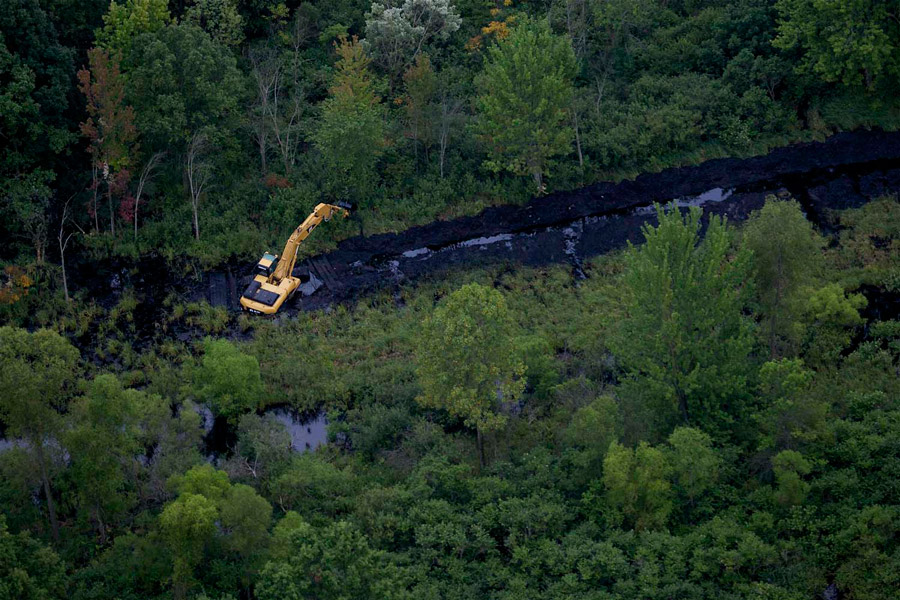
The overfilled Talmadge Creek, tributary to the Kalamazoo River, had to be totally dredged. After removing material from a two-mile stretch, engineers reconstructed the creek by referring to satellite images. Photo courtesy of the U.S. Environmental Protection Agency.
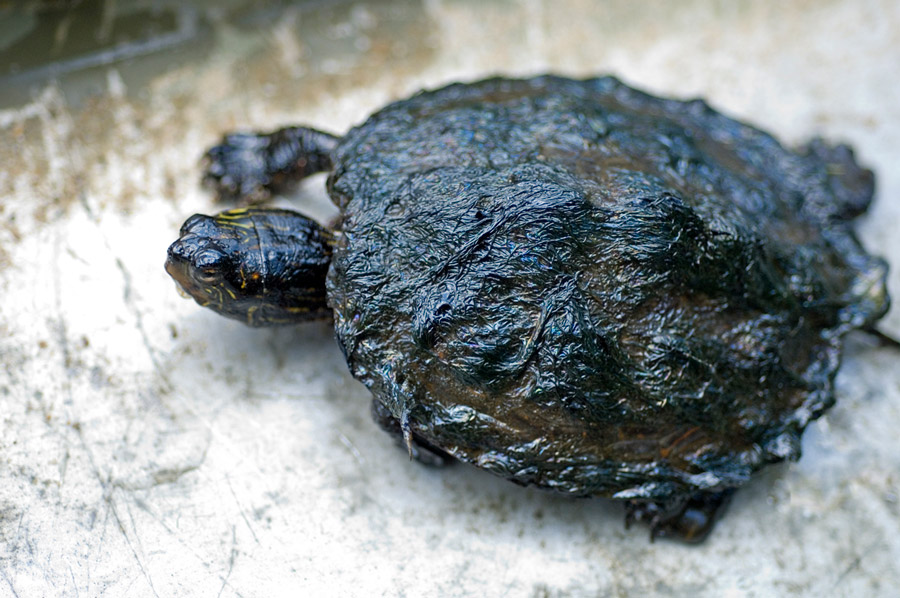
Thousands of wildlife lost their lives in the 2010 Enbridge disaster, including turtles, beavers, muskrats, and many waterfowl. Forty miles of waterways and wetlands were coated in a thick sticky tar from the Alberta tar sands. Photo courtesy of David Kenyon, Michigan Department of Natural Resources.
The Kalamazoo spill came as a shock to many Michiganders. To some, it also came as a revelation and an impetus to action. Over the past decade, the Sierra Club helped lead a coalition of environmental activists, residents and their attorneys, and all 12 federally recognized tribes in Michigan in opposition to Line 5. Eventually, this became “a citizens movement that politicians couldn’t ignore,” said Michigan Chapter chair Anne Woiwode.
What You Can Do
Tell President Joe Biden to shut down Line 5. Sign the petition here: sc.org/no-line-5
During their first terms in office, Michigan governor Gretchen Whitmer and attorney general Dana Nessel carried through on a campaign promise: They revoked the easement across the Straits of Mackinac and ordered Enbridge to decommission Line 5. The company refused to comply. Enbridge continues to fight the shutdown order in the courts while pursuing a tunnel under the straits, a project that, according to the best estimates, could cost a billion dollars or more. Opponents suspect that the proposal may be nothing more than a stalling tactic to extend the life of Line 5. A battle over the fate of the aging pipelines is now playing out in federal and state courts.
In December, photographer Adam Joseph Wells and I went to Northern Michigan to see Line 5 and the ecosystems it threatens.
The strong currents in Lake Michigan could bring oil to the windswept shores of Charlevoix.
We also went to look for the people fighting, despite the odds, to get Line 5 shut down.
Whitney Gravelle, president of the Bay Mills Indian Community.
People fighting against the odds
Some people are determined to shut down Line 5. People like like Gravelle and Brosemer; Patty Peek, a retired professor of nursing who lives a quarter mile from Line 5 in a house overlooking the Straits of Mackinac; and Jacques Le Blanc Jr., a commercial fisherman and vice president of the Bay Mills Indian Community.
Like his father and grandfather before him, Le Blanc has spent his life gillnetting for whitefish in the waters around the Upper Peninsula. “It’s my heaven to be out on the Great Lakes and watch the sunrise, to feel that water, to feel the earth moving with you at the same time,” Le Blanc said. “There’s nothing better in the world to me.”
Jacques Le Blanc and his son Jacques Jr. have been catching whitefish for as long as they can remember.
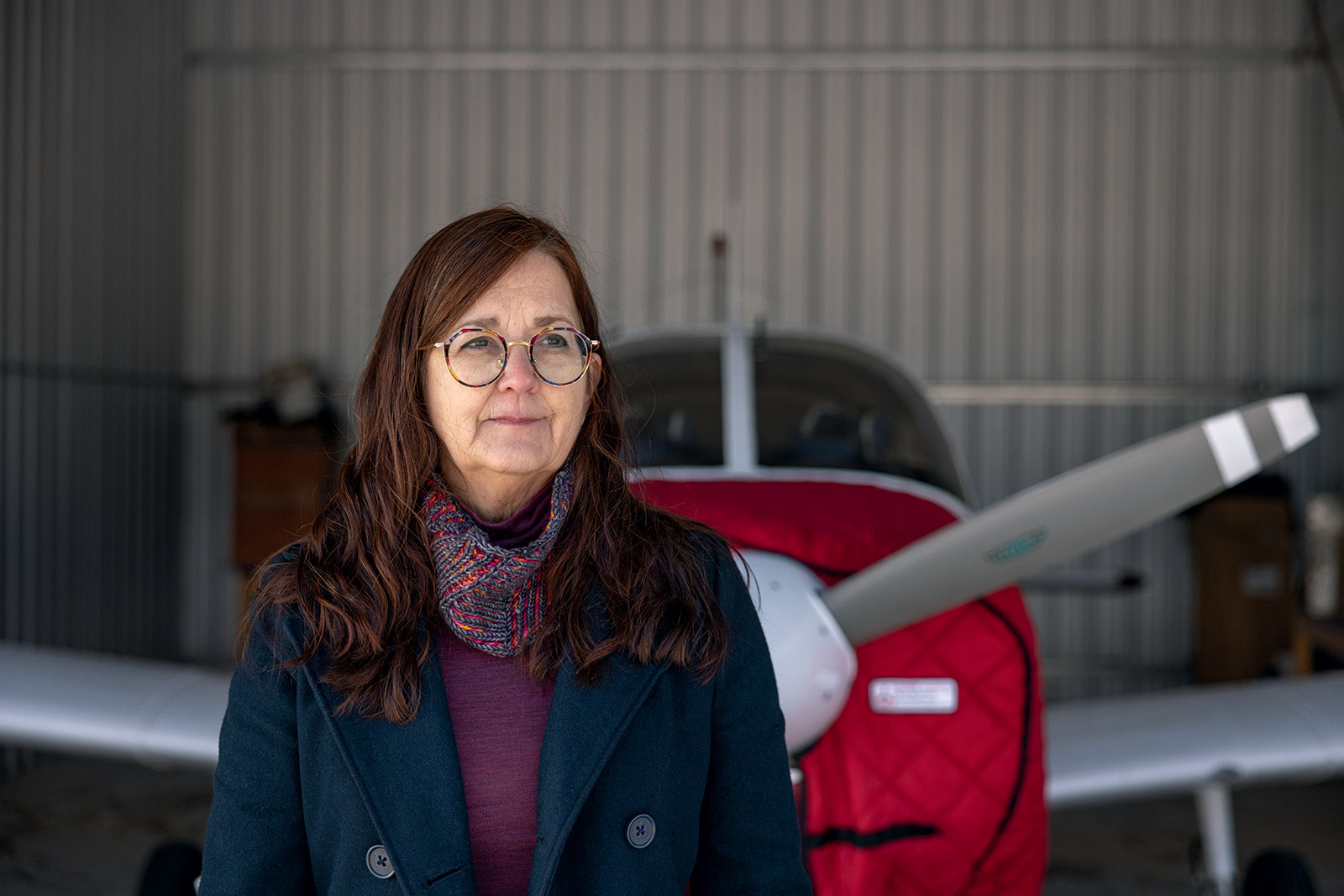
“Look at the map of Turtle Island, which is how the Anishinabek refer to North America. The heart of the turtle is here in the Great Lakes. Enbridge Line 5 is in the worst place on Earth for a pipeline. There is no way that anyone proposing a pipeline through this area today would ever get permission. Line 5 predated the Clean Water Act by almost 20 years. It was already here before most Americans started really paying attention to the environment.”
—Kathie Brosemer, former environmental program manager for the Sault Tribe of Chippewa Indians
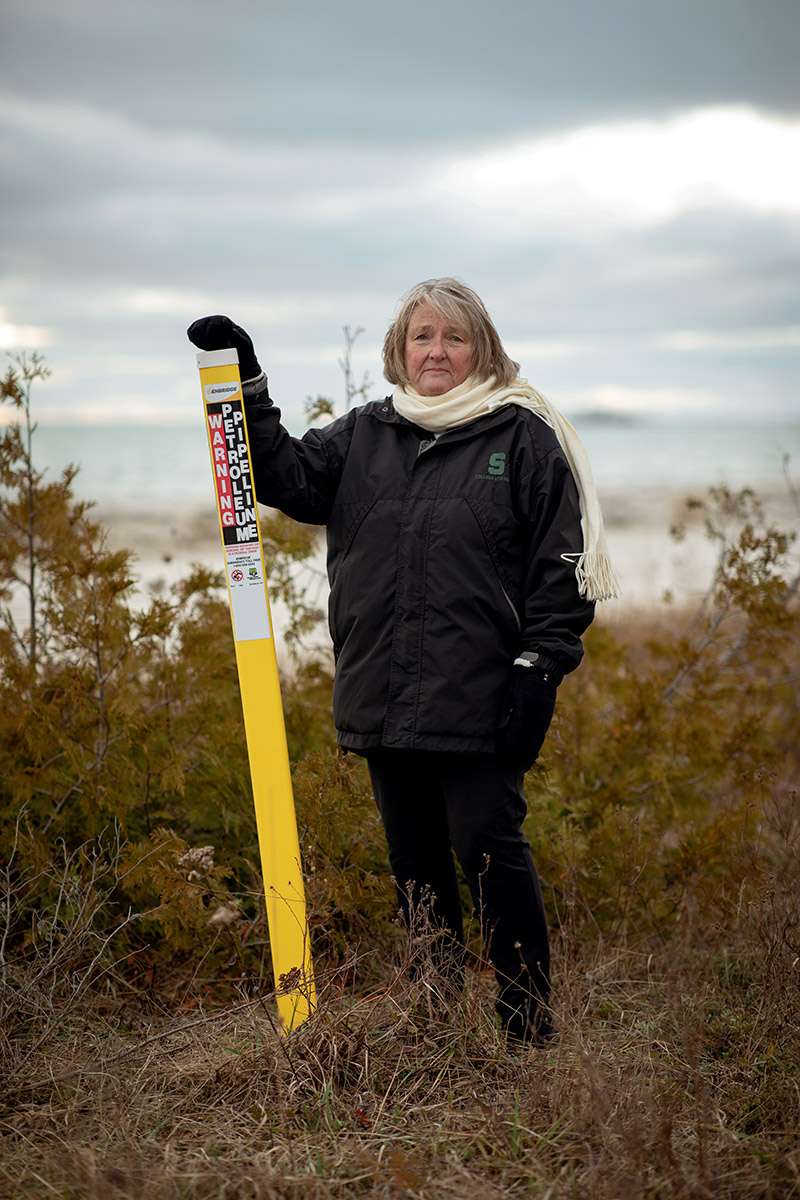
“I’m a retired nurse practitioner. I worked for the last 27 years of my life in resource-limited places, mostly with very low access to health care. It doesn’t matter where I worked: One of the major causes of disease was a lack of access to potable water. We have a substantial amount of the freshwater in the United States—actually, in the world—here. Think about what’s more important. Is oil more important? Or is this water that grows our food? We say, ‘Water is life.’ It is much more valuable than gold. It’s more valuable than diamonds. It’s more valuable than oil.”
—Patty Peek, retired professor of nursing who lives a quarter mile from Line 5.
“The question of Line 5 is really three questions: How do we keep the lakes clean? How do we keep our houses warm? And where are jobs going to come from? You have to handle each of those separately. Labor has to be at the table. Contractors have to be at the table. When I was first elected to [Marquette’s] city commission in 2018, we had two giant coal-fired power plants. Now, they’ve not only been turned down; they’ve been torn down. We’re going through a rapid energy change.”
—Michigan state representative and energy policy expert Jenn Hill
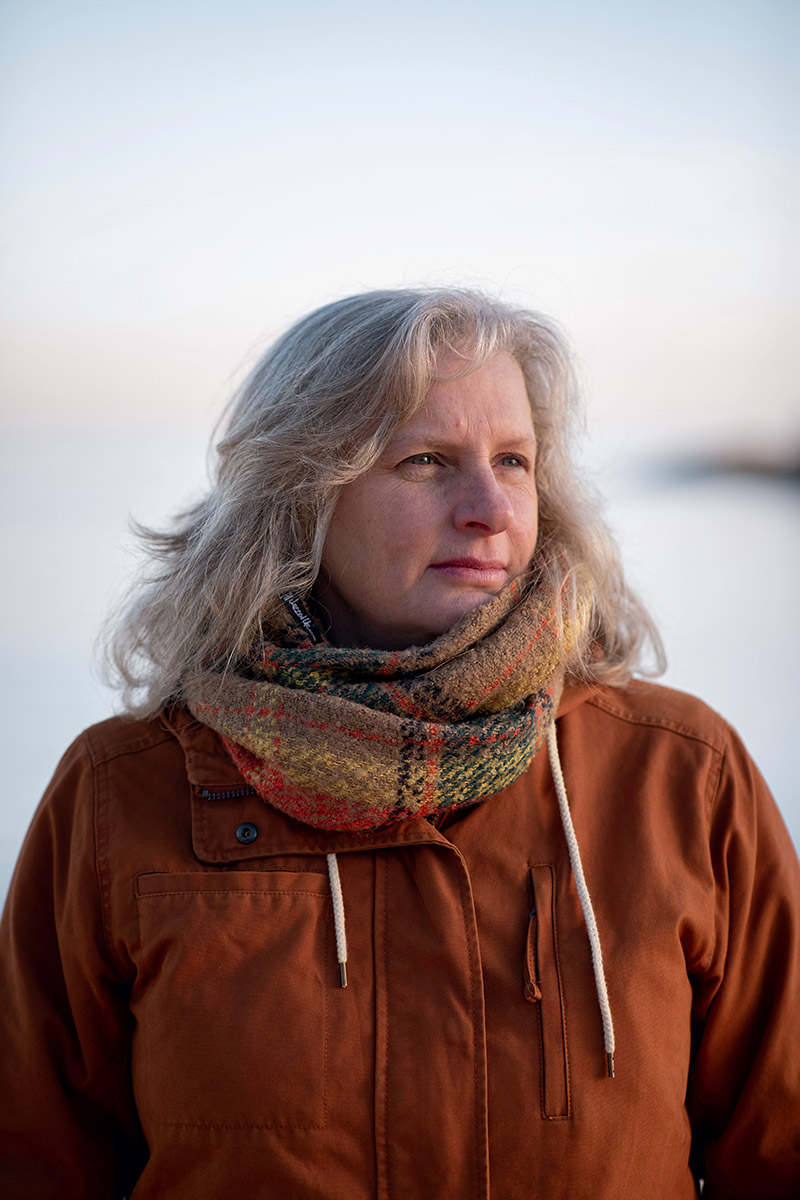
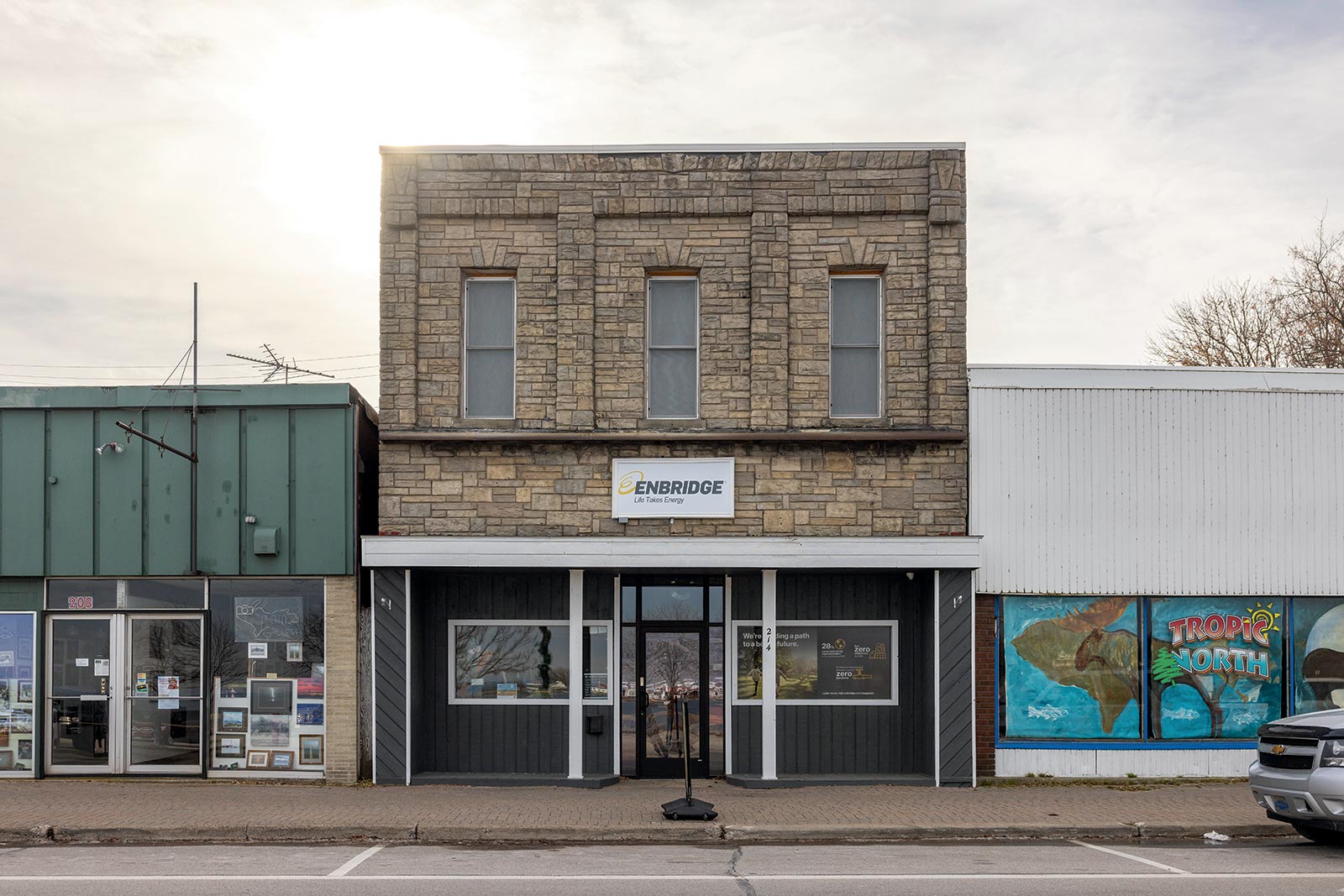
In St. Ignace, Enbridge maintains an information center that is staffed by a third-party consulting group, not Enbridge employees.
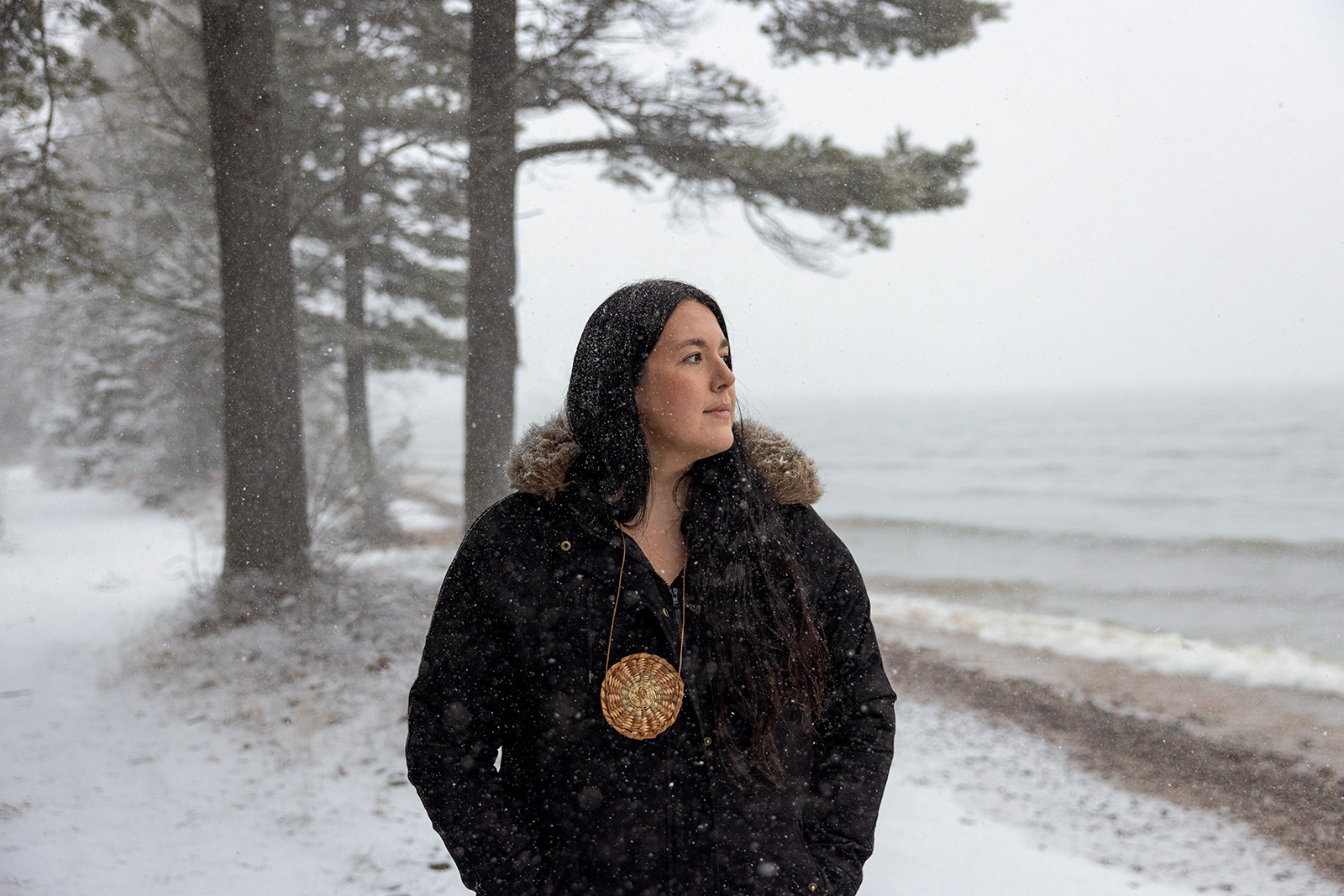
“In 2010, when Line 6B erupted, it felt like there was this collective awakening. Many of our tribal citizens finally understood the impact that Line 5 could have on us as an Indigenous people, on our treaty rights, which we consider very sacred, and on the natural landscape we rely on to earn our livelihoods. Bay Mills Indian Community’s ultimate goal is to decommission Line 5 altogether.”
—Whitney Gravelle, president of the Bay Mills Indian Community
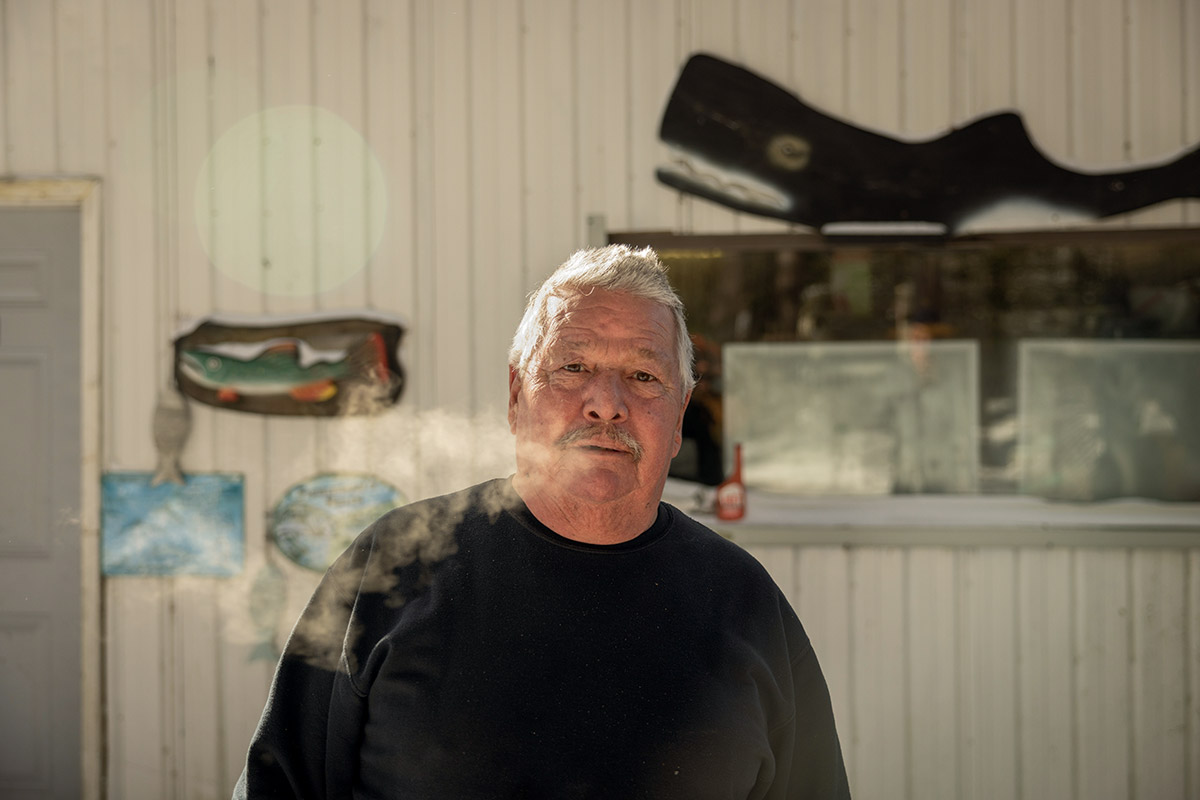
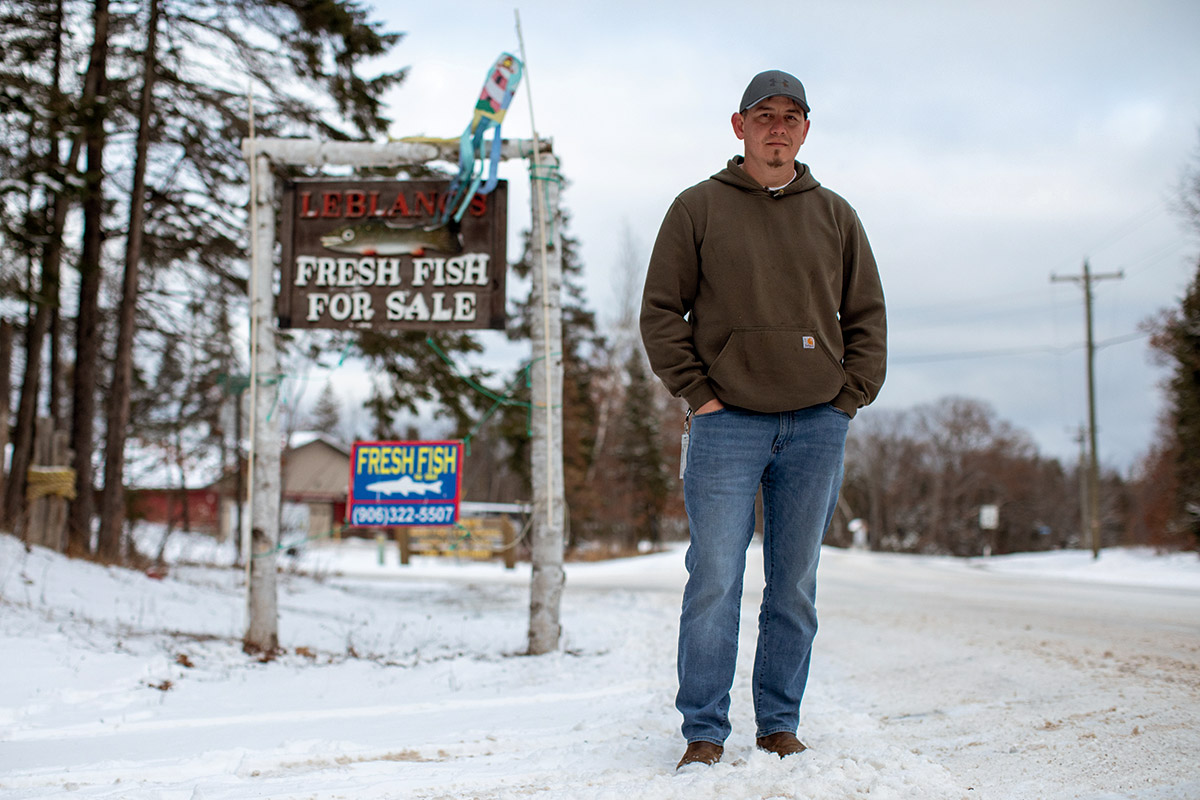
“If that spill happens,” says Jacques Le Blanc Jr. (right), “it is going to spread out like a bomb.”
The nightmare scenario—an oil spill in the Great Lakes—has drawn attention north, to where Enbridge Line 5 crosses the Straits of Mackinac.
The nightmare scenario—an oil spill in the Great Lakes—has drawn attention north, to where Enbridge Line 5 crosses the Straits of Mackinac.
According to computer simulations conducted by Great Lakes research scientist David Schwab, a rupture in the straits could release a plume of oil large enough to put more than 700 miles of shoreline at risk.
According to computer simulations conducted by Great Lakes research scientist David Schwab, a rupture in the straits could release a plume of oil large enough to put more than 700 miles of shoreline at risk.
Such a disaster would devastate fish and wildlife, pollute drinking water, and tank the local tourism industry.
Such a disaster would devastate fish and wildlife, pollute drinking water, and tank the local tourism industry.
A spill comparable to the one in Talmadge Creek would be far more devastating to the Great Lakes, and the chaotic and sometimes icy currents of the straits would make oil released there far harder to contain.
A spill comparable to the one in Talmadge Creek would be far more devastating to the Great Lakes, and the chaotic and sometimes icy currents of the straits would make oil released there far harder to contain.
"If you were to pick the worst possible place for an oil spill in the Great Lakes, this would be it," Schwab has said.
"If you were to pick the worst possible place for an oil spill in the Great Lakes, this would be it," Schwab has said.
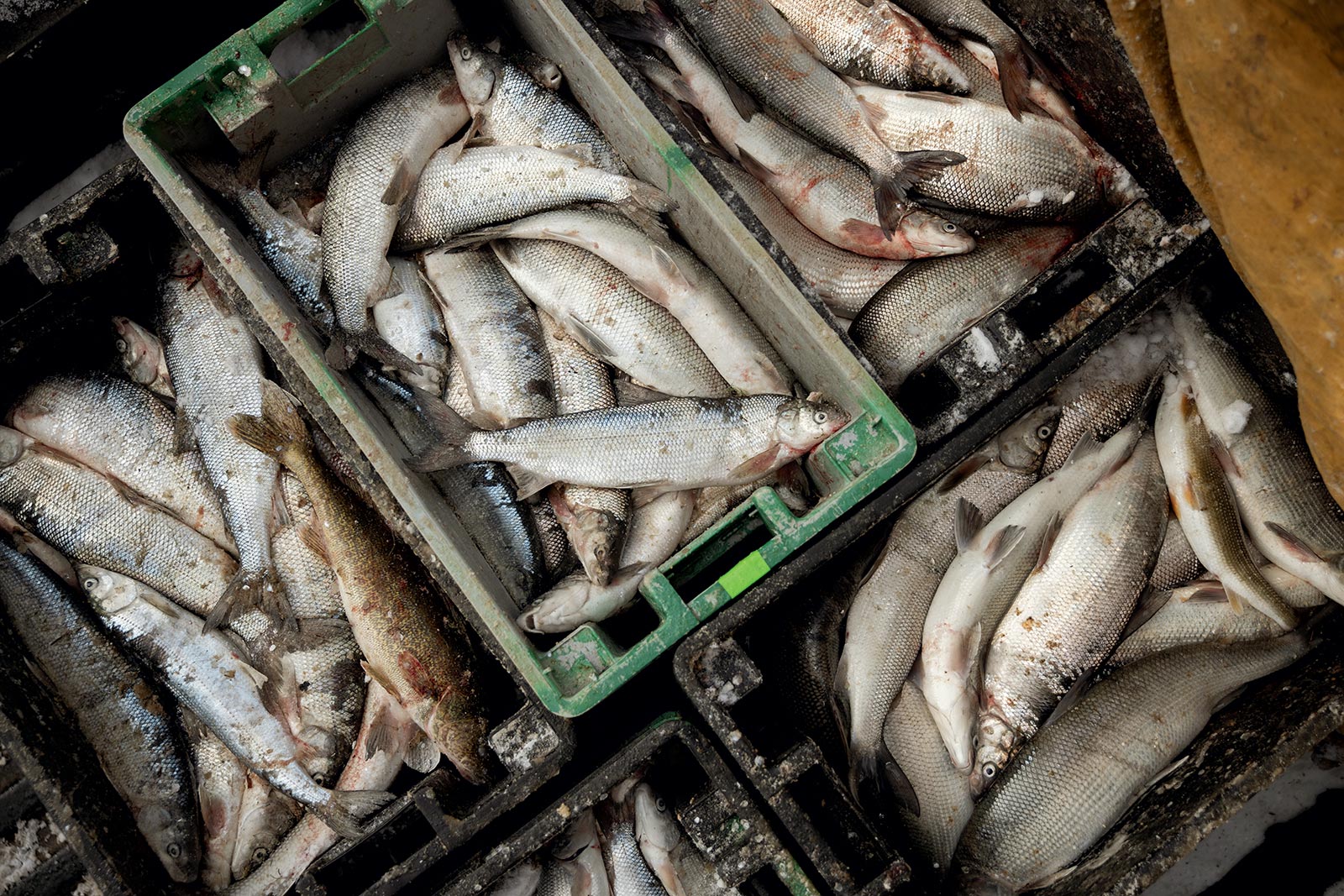
“Almost all the commercial fishermen I’ve talked to about this share the same concerns. It is going to affect all of those fishing grounds if we were to have a chemical spill. Those fish and all of our inland animals that depend on that water, or birds—it would affect everything. This is the most beautiful natural place that exists in the world to me. Why would we ever want to risk all of that for some oil?”
—Jacques Le Blanc Jr., commercial fisherman
Trays of whitefish.
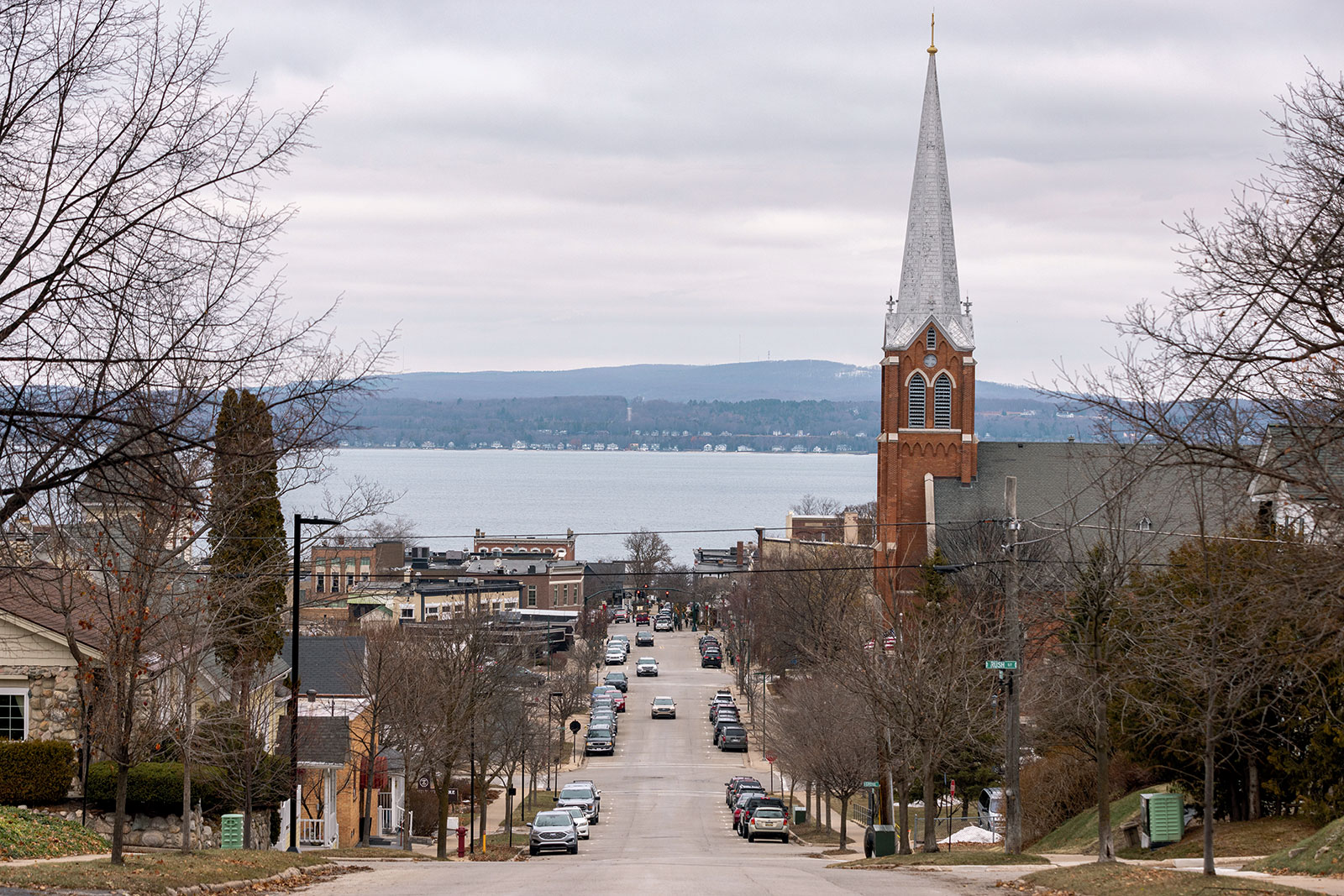
Nearly 100 miles of shoreline separate the Straits of Mackinac from Little Traverse Bay and the town of Petoskey, yet the area could be affected by a Line 5 rupture.
“It’s not just the Straits of Mackinac. That’s where you could have absolute devastation. But along the Upper Peninsula, from Manistique to St. Ignace along Route 2, if there’s any breach, there could be a disaster in Lake Michigan. Lake Superior is also vulnerable to a Line 5 spill, notably near the Bad River Band reservation in Wisconsin. The pipelines cross more than 200 waterways. There have been at least 34 known documented spills along Line 5’s pathway. It’s only providing 5 to 10 percent of the oil for Michigan’s needs. That can easily be picked up with other pipelines. A society that treasures its most precious resource—water—would not allow this to continue. That’s what this battle is about: This is a battle for the future of the Great Lakes.”
—Liz Kirkwood, executive director of For Love of Water. She lives in Traverse City with her husband and two children.

Adam Joseph Wells is a photographer and filmmaker who was born and raised in Michigan.
Donovan Hohn is the author of The Inner Coast: Essays and Moby-Duck: The True Story of 28,800 Bath Toys Lost at Sea.
 The Magazine of The Sierra Club
The Magazine of The Sierra Club
